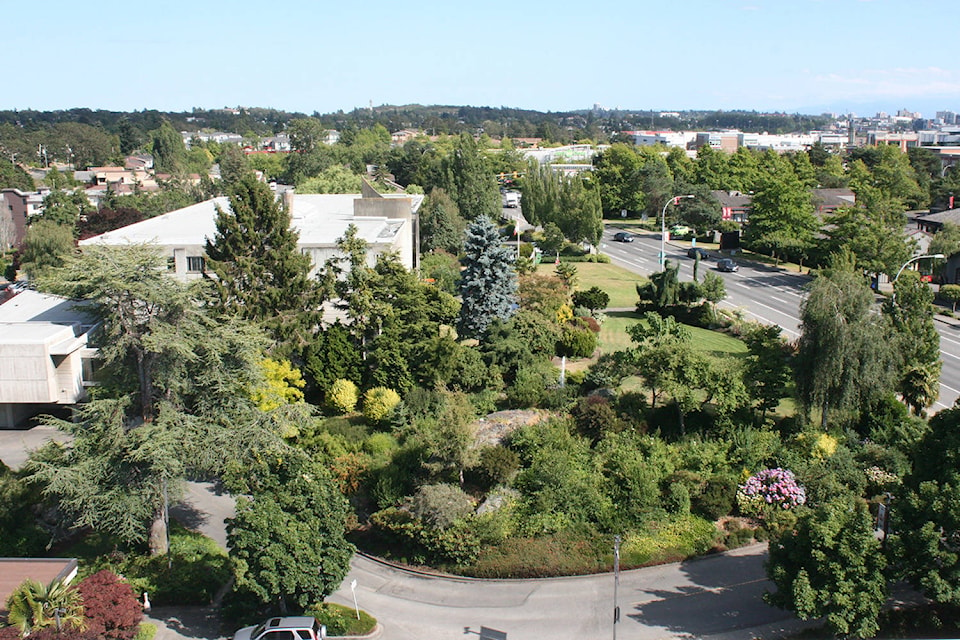A new report finds Saanich (along with Greater Victoria) on an unsustainable path when it comes to municipal spending – to the detriment of ordinary residents. But the report also shows that Saanich is improving its performance.
The report from the Canadian Federation of Independent Business says that the average family of four could have saved $7,695 in municipal taxes over 10 years, if municipal governments had maintained sustainable spending levels. According to the CFIB’s definition, municipal spending is sustainable if it tracks at or below the rate of inflation plus population growth.
RELATED: Municipal spending outpaces population growth 4-fold in B.C.: report
While the report’s commentary does not single Saanich out, it indirectly criticizes the municipality.
“This year, only three of the largest municipalities made it into the top 20 out of all 152 municipalities assessed on fiscal sustainability: Port Coquitlam, Maple Ridge, and Kelowna,” reads the report. “This is notable because we should expect the largest municipalities to be leaders in providing value to their residents.”
As the 12th-largest community in British Columbia, Saanich ranked 69th out of 152 municipalities. According to the report, Saanich’s real operating spending per capita rose 35.5 per cent between 2006 and 2016.
This said, Saanich’s spending (as measured by CFBI) has hit a plateau — at least for now.
Looking specifically at 2015-2016, operating spending per capita growth actually shrunk 0.1 per cent as Saanich’s population grew by 1.7 per cent, while its real spending grew by 1.6 per cent with all figures adjusted for inflation. This improvement ranked Saanich 8th among communities in British Columbia.
Aaron Aerts, CFIB’s western economist, said Saanich has made improvements in the short term, but only after a period of considerable growth, adding Saanich needs to maintain that progress.
Stan Bartlett, chair of the Grumpy Taxpayer$ of Greater Victoria, said Saanich’s improvements are negligible year to year. “There are 11 other of BC’s 20 largest municipalities that ranked better at spending the public dollar and fiscal sustainability,” he said. “Saanich has a major infrastructure deficit with an aging fire hall, maintenance yard and police building, all that need dealing with head-on. That’s not been done yet, so in our view, debt is artificially low and operating costs unnecessarily high.”
Victoria, meanwhile, ranked 76th for the period between 2006 and 2016, and 12th for the 2015-2016, with a population growth of 0.7 per cent and a real spending growth of 1.7 per cent.
In short, the report shows Saanich and to a lesser degree Victoria, are changing their short term habits, following years of what CFIB considers unsustainable spending.
The report makes six recommendations, starting with the appeal to limit spending increases to no more than inflation and population growth. Not surprisingly, the report calls on municipalities to identify “superfluous costs and ways to increase revenue” and take “measures to reduce the gap between what individuals pay in property taxes and the amount paid by small business” as business owners in British Columbia pay on average over two and a half times more property taxes than residents on the same assessed property value.
One recommendation calls on municipalities to work with the provincial government “to reform how bargaining works, with a particular focus on ensuring a municipality’s ability to pay is considered” as part of a larger agenda to limit increases in wages and benefits.
“The government needs to exercise restraint when providing employees with wage increases such that private wages can catch up with the public sector,” it reads. “A big factor why this is the case is the current collective bargaining and arbitration process.”
Aerts said this recommendation should not be read as an attack on collective bargaining.
“It’s a call for reforming it,” he said.
Surprisingly, the report does not reference the Employers Health Tax (EHT), whose introduction by the province will leave many municipalities including Saanich in a financial pinch, if not worse.
RELATED: Report predicts health tax will bleed Saanich’s coffers
According to one Saanich staff report, the EHT coupled with rising labour costs as per labour agreements could lead to a five per cent hike in property taxes, if not more, in light of other unknown and unforeseen costs, such as clean up of Regina Park.
RELATED: Saanich taxpayers facing prospect of 5% tax hike in 2019
Aerts acknowledged the pending impact of the EHT, noting CFBI has been very critical of it, because of its impact on municipal finances. He said future reports will have to consider it.
